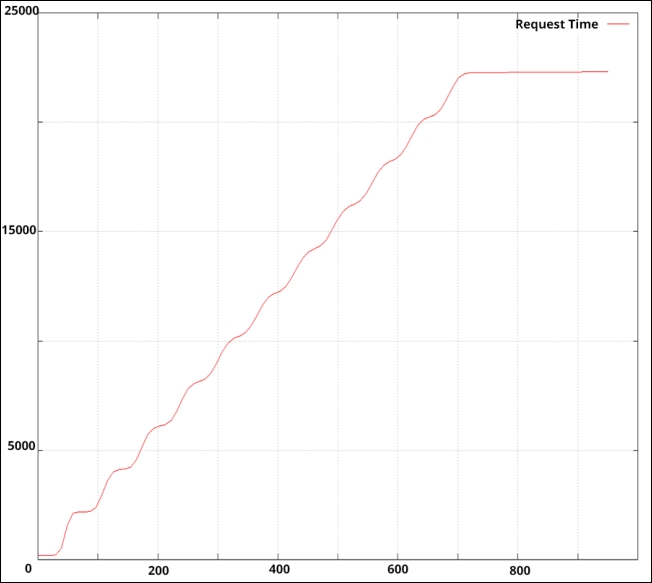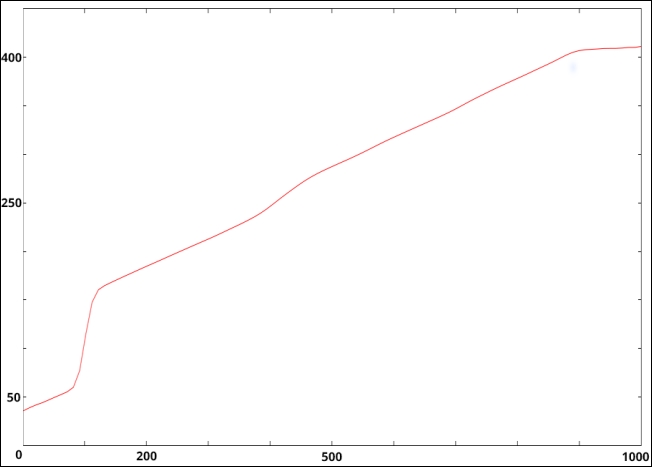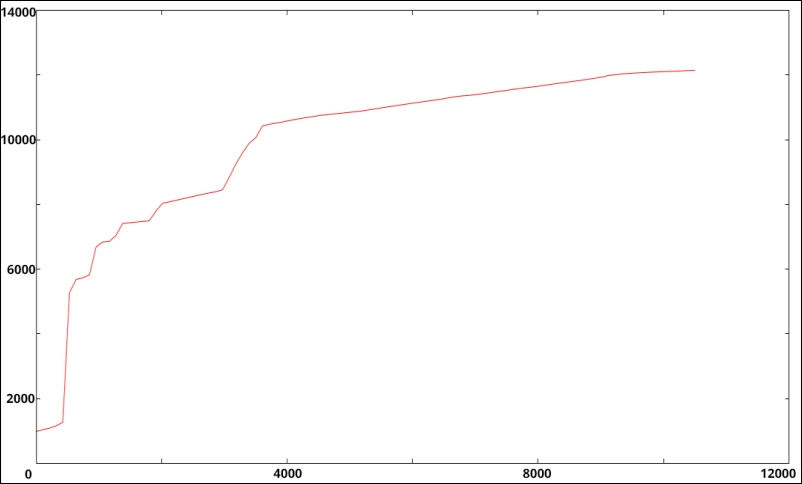Our web server will be responsible for taking requests, routing them, and serving either flat files or dynamic files with templates parsed against a few different data sources.
As mentioned earlier, if we exclusively serve flat files and remove much of the processing and network latency, we'd have a much easier time with handling 10,000 concurrent connections.
Our goal is to approach as much of a real-world scenario as we can—very little of the Web operates on a single server in a static fashion. Most websites and applications utilize databases, CDNs (Content Delivery Networks), dynamic and uncached template parsing, and so on. We need to replicate them whenever possible.
For the sake of simplicity, we'll separate our content by type and filter them through URL routing, as follows:
By doing this, we should get a better mixture of possible HTTP request types that could impede the ability to serve large numbers of users simultaneously, especially in a blocking web server environment.
We'll utilize the html/template package to do parsing—we've briefly looked at the syntax before, and going any deeper is not necessarily part of the goals of this book. However, you should look into it if you're going to parlay this example into something you use in your environment or have any interest in building a framework.
Tip
You can find Go's exceptional library to generate safe data-driven templating at http://golang.org/pkg/html/template/.
By safe, we're largely referring to the ability to accept data and move it directly into templates without worrying about the sort of injection issues that are behind a large amount of malware and cross-site scripting.
For the database source, we'll use MySQL here, but feel free to experiment with other databases if you're more comfortable with them. Like the html/template package, we're not going to put a lot of time into outlining MySQL and/or its variants.
It's only fair to add some starting benchmarks against a blocking web server first so that we can measure the effect of concurrent versus nonconcurrent architecture.
For our starting benchmarks, we'll eschew any framework, and we'll go with our old stalwart, Apache.
For the sake of completeness here, we'll be using an Intel i5 3GHz machine with 8 GB of RAM. While we'll benchmark our final product on Ubuntu, Windows, and OS X here, we'll focus on Ubuntu for our example.
Our localhost domain will have three plain HTML files in /static, each trimmed to 80 KB. As we're not using a framework, we don't need to worry about raw dynamic requests, but only about static and dynamic requests in addition to data source requests.
For all examples, we'll use a MySQL database (named master) with a table called articles that will contain 10,000 duplicate entries. Our structure is as follows:
CREATE TABLE articles ( article_id INT NOT NULL AUTO_INCREMENT, article_title VARCHAR(128) NOT NULL, article_text VARCHAR(128) NOT NULL, PRIMARY KEY (article_id) )
With ID indexes ranging sequentially from 0-10,000, we'll be able to generate random number requests, but for now, we just want to see what kind of basic response we can get out of Apache serving static pages with this machine.
For this test, we'll use Apache's ab tool and then gnuplot to sequentially map the request time as the number of concurrent requests and pages; we'll do this for our final product as well, but we'll also go through a few other benchmarking tools for it to get some better details.
Note
Apache's AB comes with the Apache web server itself. You can read more about it at http://httpd.apache.org/docs/2.2/programs/ab.html.
You can download it for Linux, Windows, OS X, and more from http://httpd.apache.org/download.cgi.
The gnuplot utility is available for the same operating systems at http://www.gnuplot.info/.
So, let's see how we did it. Have a look at the following graph:

Ouch! Not even close. There are things we can do to tune the connections available (and respective threads/workers) within Apache, but this is not really our goal. Mostly, we want to know what happens with an out-of-the-box Apache server. In these benchmarks, we start to drop or refuse connections at around 800 concurrent connections.
More troubling is that as these requests start stacking up, we see some that exceed 20 seconds or more. When this happens in a blocking server, each request behind it is queued; requests behind that are similarly queued and the entire thing starts to fall apart.
Even if we cannot hit 10,000 concurrent connections, there's a lot of room for improvement. While a single server of any capacity is no longer the way we expect a web server environment to be designed, being able to squeeze as much performance as possible out of that server, ostensibly with our concurrent, event-driven approach, should be our goal.
In an earlier chapter, we handled URL routing with Gorilla, a compact but feature-full framework. The Gorilla toolkit certainly makes this easier, but we should also know how to intercept the functionality to impose our own custom handler.
Here is a simple web router wherein we handle and direct requests using a custom http.Server struct, as shown in the following code:
var routes []string
type customRouter struct {
}
func (customRouter) ServeHTTP(rw http.ResponseWriter, r
*http.Request) {
fmt.Println(r.URL.Path);
}
func main() {
var cr customRouter;
server := &http.Server {
Addr: ":9000",
Handler:cr,
ReadTimeout: 10 * time.Second,
WriteTimeout: 10 * time.Second,
MaxHeaderBytes: 1 << 20,
}
server.ListenAndServe()
}Here, instead of using a built-in URL routing muxer and dispatcher, we're creating a custom server and custom handler type to accept URLs and route requests. This allows us to be a little more robust with our URL handling.
In this case, we created a basic, empty struct called customRouter and passed it to our custom server creation call.
We can add more elements to our customRouter type, but we really don't need to for this simple example. All we need to do is to be able to access the URLs and pass them along to a handler function. We'll have three: one for static content, one for dynamic content, and one for dynamic content from a database.
Before we go so far though, we should probably see what our absolute barebones HTTP server written in Go does when presented with the same traffic that we sent Apache's way.
By old school, we mean that the server will simply accept a request and pass along a static, flat file. You could do this using a custom router as we did earlier, taking requests, opening files, and then serving them, but Go provides a much simpler mode to handle this basic task in the http.FileServer method.
So, to get some benchmarks for the most basic of Go servers against Apache, we'll utilize a simple FileServer and test it against a test.html page (which contains the same 80 KB file that we had with Apache).
Note
As our goal with this test is to improve our performance in serving flat and dynamic pages, the actual specs for the test suite are somewhat immaterial. We'd expect that while the metrics will not match from environment to environment, we should see a similar trajectory. That said, it's only fair we supply the environment used for these tests; in this case, we used a MacBook Air with a 1.4 GHz i5 processor and 4 GB of memory.
First, we'll do this with our absolute best performance out of the box with Apache, which had 850 concurrent connections and 900 total requests.

The results are certainly encouraging as compared to Apache. Neither of our test systems were tweaked much (Apache as installed and basic FileServer in Go), but Go's FileServer handles 1,000 concurrent connections without so much as a blip, with the slowest clocking in at 411 ms.
Tip
Apache has made a great number of strides pertaining to concurrency and performance options in the last five years, but to get there does require a bit of tuning and testing. The intent of this experiment is not intended to denigrate Apache, which is well tested and established. Instead, it's to compare the out-of-the-box performance of the world's number 1 web server against what we can do with Go.
To really get a baseline of what we can achieve in Go, let's see if Go's FileServer can hit 10,000 connections on a single, modest machine out of the box:
ab -n 10500 -c 10000 -g test.csv http://localhost:8080/a.html
We will get the following output:

Success! Go's FileServer by itself will easily handle 10,000 concurrent connections, serving flat, static content.
Of course, this is not the goal of this particular project—we'll be implementing real-world obstacles such as template parsing and database access, but this alone should show you the kind of starting point that Go provides for anyone who needs a responsive server that can handle a large quantity of basic web traffic.
So, let's take a step back and look again at routing our traffic through a traditional web server to include not only our static content, but also the dynamic content.
We'll want to create three functions that will route traffic from our customRouter:serveStatic():: read function and serve a flat file serveRendered():, parse a template to display serveDynamic():, connect to MySQL, apply data to a struct, and parse a template.
To take our requests and reroute, we'll change the ServeHTTP method for our customRouter struct to handle three regular expressions.
For the sake of brevity and clarity, we'll only be returning data on our three possible requests. Anything else will be ignored.
In a real-world scenario, we can take this approach to aggressively and proactively reject connections for requests we think are invalid. This would include spiders and nefarious bots and processes, which offer no real value as nonusers.
